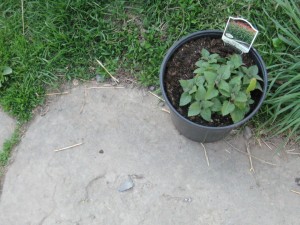Last summer I decided to attempt a thing I rarely do–garden. For a person who is obsessed with plants, I have the very antithesis of a green thumb. If my family had to live on the proceeds of my vegetable garden, we’d all lose a lot of weight. This year I have harvested to date exactly eleven string beans, a summer squash, and one tomato the size (and taste) of a golf ball. I’m the only person I know who can kill zucchini.
It’s no better in the flower garden. I routinely murder rose bushes, assassinate peonies, and cause tulips and begonias to commit suicide. This is the reason I’m so fond of dandelions, the only plant it may be truly impossible to kill.
But I want to create a garden space that is welcoming for my neighbors–not the human ones, but the hummingbirds, butterflies, orioles, mockingbirds, dragonflies and all the species that are ousted when roses and petunias replace native species of plants. Good intentions, but so many native plants–ferns, orchids, spring wildflowers–are famously finicky and hard to cultivate. If I can’t succeed with radishes, how can I grow bluebells and cardinal-flowers, which baffle many professional horticulturists?
Bee balm. That’s my opening wedge into the world of native plant gardening. Bee balm is the plant if you want to attract hummingbirds. It’s a native American plant, and hummingbirds are nuts for its long trumpet-shaped red blossoms. It’s rich in nectar, good for butterflies, too. Ideal for bumblebees, which have problems finding plants large and sturdy enough to support their portly bodies as they sip. Long blooming season and a scarlet color to knock your eye out.
And remarkably easy to grow, I’m finding so far. Maybe a little too easy–they’re fast growers and could be invasive in the wrong spot. But they seem at home in my garden, overwintered well, and are now an explosion of red nectar-filled blossoms.
fast growers and could be invasive in the wrong spot. But they seem at home in my garden, overwintered well, and are now an explosion of red nectar-filled blossoms.
Last year, a little plant in a plastic pot.
 This year, a feast for bumblebees, butterflies, and hummingbirds.
This year, a feast for bumblebees, butterflies, and hummingbirds.





Thank you for sharing your experience! I will be trying to grow some Bee Balm this summer as a semi-beginning gardener, so I found this blog entry encouraging 🙂
Hope you’re having a warmer spring than we are!
Impressive!!!
thank you!